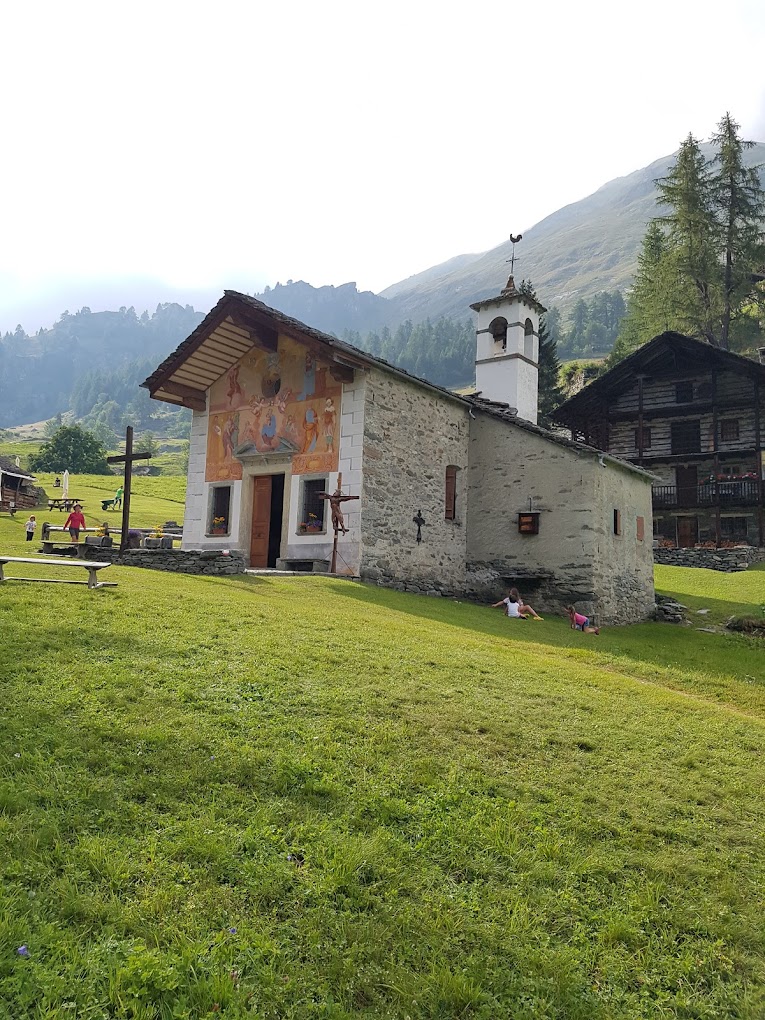As soon as you emerge onto the plain of Otro, you are greeted by the extraordinary wooden architecture of the houses and the oratory dedicated to the Madonna of the Snow in the Follu hamlet. We know little about the origin of the original oratory, which probably dates back to the late 16th or early 17th century. However, we do know with certainty that it was demolished and rebuilt, moving its front and orientation in the 1650s. The date 1659 can be read on the door lintel. In 1661, it was blessed again, but just a few years later, a request was made for a new modification: the enlargement of the choir to provide "greater comfort for participants in the festival."
In the 1697 episcopal visit report by Monsignor Visconti, it is written: "Renew the Pyx for the Sick, at the same time providing the little canopy for it in white silk with its cords as prescribed, and have the Paten gilded, which will all be done within three months; otherwise, both shall remain suspended. As the inhabitants of this place wish to expand the choir, both to provide greater convenience for festival participants and to increase the light in the oratory, we grant permission on the condition that the design is approved by us first."

Inside the oratory, there is a 18th-century painting above the altar representing the theme to which the oratory is dedicated. In the painting, you can see the Virgin with the Child, and in the background, the story of the miraculous Roman snowfall on August 5th. In the background of the painting, Pope Liberius is clearly visible, delineating the perimeter of the new church dedicated to Sancta Maria ad Nives. The scene on the left, which seems to depict a martyrdom, is more difficult to read and interpret, but it's worth investigating further. In the lower right, there is an inscription that provides some information about the patron and is interesting from a linguistic perspective: DISES QUADER HAT LASSEN MACHEN DER ERSAM MEISTER ULRICH BUNDER ODER IIANEN 1709.
Translation: This painting was made by the honorable master Ulrich Bunder (or Janen) in 1709. The text is in German, but the sentence structure is typical of the Alagna dialect, with some Romance influence. We don't know the name of the author, but they were probably a local painter. In 1865, the builders of the oratory decided to install a new chaplain (der Kaplan) who would also be responsible for teaching at the local school. In 1867, construction began next to the church on a house suitable for housing the chaplain, and inside there was also a room dedicated to the school.
This small church has been and continues to be the spiritual and social center of the valley. On August 5th (the day when tradition celebrates the Madonna of the Snow), for many centuries to the present day, it has been a day of great celebration with which Otro and its inhabitants involve and attract hundreds of people."

